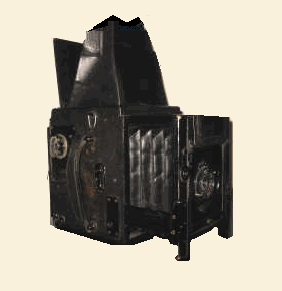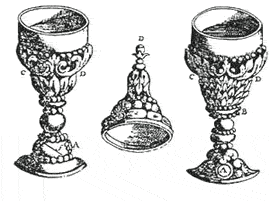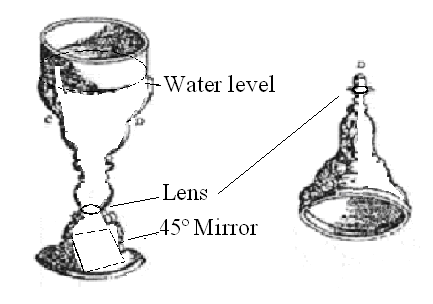
![]()
Sociedad Ibero-Americana de la Historia
de la Fotografia Museo Fotográfico y Archivo Historico "Adolfo Alexander"
Fórum Yahoo [maquinas russas]
Jhagee Exakta - the first
pentaprism SLR in the world?
How was born the SLR?
The reflex camera:
One calls reflex
camera or (SLR) for Single Lens Reflex, as a reflecting reflex camera design in
which the motive for the consideration is illustrated by the objective about a
mirror diverted on a ground-glass plate (see pic.
below). History and development the
reflecting reflex principle was described for the first time by Johannes Zahn in 1686:
- By a lens a picture
reaches a mirror which diverts round the picture on a horizontal ground-glass
plate:
The first reflecting
reflex camera after this principle was constructed in 1861 by Thomas Sutton. In
1893 a change magazine was patented for the reflex camera. The first reflex
camera made in Germany Dresden
The first SLR made in
great series (single Lens reflex) was the EXA, made by Ihagee
also in Dresden Leipzig
The other one was the
ZENIT made by the Krasnogorsk Works at
Moscow
Common opinion is that first SLR camera with a pentaprism was either Contax
S or Rectaflex. This is important issue since introducing of the pentaprism is
very significant step in development of the SLR cameras (there are arguments for
either Sport or Exakta).

Exakta Diamant
Prototype or private venture
?
Dr. Rex Watson
Exakta Times, Number 7, June 1992
In
1983 an exibition called "Historic Cameras and
He was joined by Hans Kefle who prepared a text which
went beyond the exhibits alone to become a history of camera development. The reulting book, "Historische Kameras" was published by VEB Fotokinoverlag
of

Among the pearls to be found
illustrated is the Exakta Diamant,
which is said to be a prototype of around 1950 vintage. It was at this time
that both Ihagee and KW were introducing pentaprism accessory finders for their 35mm SLR's. These were made by Carl Zeiss,
It is possible that the Diamant finder is a cut down
version of the Zeiss accessory, fitting directly into
the camera body instead of into the waist level finder. But we can believe that
an Ihagee employee would have been allowed (or have
wished) to perpetrate such an inelegant lettering in capitals of the precious Exakta name? Was there any point in the "Diamant" version when we see the Varex
prism? Perhaps there are clues in the well used camera body that suffered the
indignity of the ill shaped Diamant. Whoever built
the camera had access to a flash socketless body and
an unengraved front plate of a Kine
Exakta version 5 (Aguila
and Rouah) or Type 4 (Wichmann)
or even Type 4 (
So could this camera have been the product of an instrument maker with access
to Exakta parts, but without a sense of Exakta style?
Another prism Exakta
Based on the serial
number of this camera (595171), we can suppose that it is pre-WWII product.
Another facts to consider:
1. Shape of
the prism cover differs from other known versions. It is original, not made
later. It os chromer from outside. Inner surface is painted in black.
2. Name plate is
without name on it. May be some different variation of the name was planned.
3. Name plate has a
factory rivets where usual Exakta has threaded holes.
Leather case is
usual, so it is bit small for the prism (you can see wear inside).
It
can be a factory prototype, an independent expert adaptation, or an adapting
made upon requirements.
Undoubtably very well
made.

Two front views

Rear view with
removed door


Five
details of the opened pentaprism

Prism
cover with removed shutter lock


More prism views
And here for intriguing you the prototype of Contax S of 1945/46!

Look for the
high/slow spped button in the top of body . The self timer trigger in the
centre of the lever, the different knob release and the Sonnar f2/57mm!

Here the Zeiss Ikon/ Sonnar Not Zeiss
When the prism Contax was born, immediatly there were
produced prism for reflex cameras
And several adaptations were spoted.



from
Pacific Rim Co.





From Mike´s
Praktica / Pentacon Dresden Pages


Sperling Prism
(from cap Jack’s pages)
But I cannot
understand why this magnificent idea didn’t go further -Zeiss Ikon Compact Prism- For 6x6 TLR cameras.



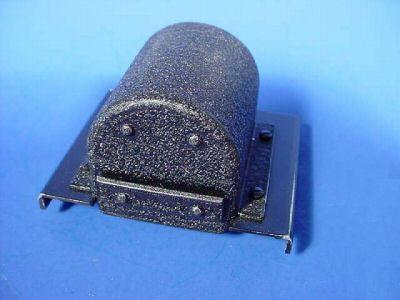

The 35mm SLR
beginings
The first 35 mm
SLR was the Soviet GOMZ Sport of 1935,
soon followed by the much more influential German Ihagee
Kine-Exakta in 1936,
which was fundamentally a scaled-down Vest-Pocket Exakta.
Both of these cameras used waist-level finders. Further 35mm Exakta models were produced before and during the World War
II, making the Exakta the first 35 mm SLR system.
Ihagee invented through-the-lens (TTL) metering
during the war years, but it was never placed into production; the Ihagee factory in
Meanwhile, Zeiss began work on a 35 mm
SLR in 1936 or 1937. This innovated by using a roof pentaprism
to enable eye-level viewing of an image oriented correctly left to right
(waist-level finders show a reversed image). To brighten the image, Zeiss incorporated a fresnel lens
in between ground-glass screen and pentaprism,
forming the conventional SLR design still used today. However, the war intervened,
and the Zeiss SLR did not emerge as a production
camera until Zeiss in newly-created
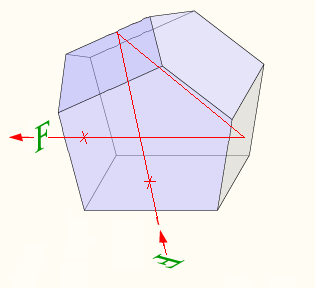
How does work
The (Roof) Pentaprism
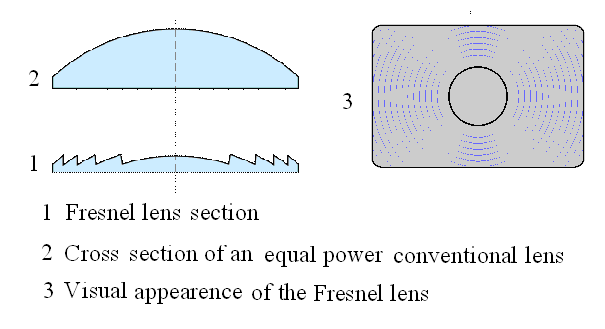
The Fresnel screen
The beginings of SLR
1887 Foundation of the camera manufacturing Richard Hüttig in
1896 Zeus-mirror reflex camera with plate magazin as first monocolar
mirror-reflex-camera from
1897/98 Foundationof the Aktiengesellschaft für Camera-Fabrikation Heinrich Ernemann in
xxxxxxxxxxxxxxxxxxxxxxxx
The Russian Front
I.I.Karpova's devices
Among the Russian designers of
cameras in the second half of
80s years of the IXXth century, I.I.Karpov reached one of leading places. In his workshop Karpov created many interesting and pioneer designs. It is
curious, that the same workshop made to order, various devices under drawings
of other known
Russian camera designers.
In 1896 at the All-Russia industrial exhibition in Nizhni
Novgorod were shown various I.I.Karpov's devices.
They were distinguished through their original design allied to a high workmanship.
One of newspapers informed: " Karpov’s
Devices have the worthy advantage from foreign samples, in the respect that
they are not copied., and are executed in his own workshop under his own ideas
". I.I.Karpov's chambers received
two gold medals at this exhibition. Their specifications and execution level,
their design ideas are on par to foreign samples.
The same year took place at Moscow
a photographic exhibition organized by Russian photographic society, I.I.Karpov's cameras called the attention of the visitors " not only for the grace of
its work, but also concerning their finishing quality and the continous
aspiration in improvement of design
". Special interest was caused with chamber "
The workshop in Petersburg (Neva, 60) has existed down to 1905. In a
response about its workshop, written to 1896, it was marked: " Such
workshop as that of the master I.I.Karpova who is not limited copying of
various samples, but aspiring to improve them, creating new types of chambers
and other devices, who promotes the most of the development of Russian
photographic industry, deserves all encouragement ".
Камера
"Рефлекс",
1896 / "Reflex", 1896
The chamber for the first time has
been shown at the Russian industrial exhibition in Nizhni Novgorod in 1896. Its
contruction has served as the prototype to the analogues which were appeared
subsequently - during the moment of shooting the mirror rose, opening access of
light to the film - in this case dry gelatino-bromide plates. Shutter speed was
adjusted by the special clockwork device. In the bottom pictures - later
variants of the chamber, presumably release at the beginning of XXth century:
Plate format 9X12, Curtain shutter, objective " Ideal Doppel Anastigmat
". Apparently from illustrations - model (and external furnish) was
constantly improved.
XXXXXXXXXXXXXXXXXXXXXXX
"Спорт",
1935-1941, ГОМЗ
"Sport"
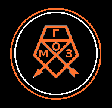
The first in




1935 has appeared, as already it was spoken above, camera " Sports
" of a design of A.O.Gelgara (the initial name
"Гельветта"
[“Gelvetta”]; the name "Sports" was
received after several improvements at "ГОМЗ"
factory), become first-ever single lens reflex 35mm camera and was charged by
non-standard cartridges of 50 pictures each. In total it were been constructed
a nearby of 20 thousand pieces..
As price of " FED" and
"Sport" cameras were inaccessible to the mass consumer, the release
of more simple and cheap models were done. From the 30’s years we mention the
following cameras: "Liliput", "Maliutka", "Cyclocamera",
"Yura", "FEDetta",
"Smena”
xxxxxxxxxxxxxxxxxxxxxxxxxxxxxxxxx
Trivia
The Mirror Reflex Camera
One calls reflecting reflex camera as a reflecting reflex camera a
design for a camera with which the motive for the consideration is illustrated
by the objective about a mirror diverted on a ground-glass plate. History and
development the reflecting reflex principle is described for the first time by
Johannes Zahn in 1686: By a lens a picture reaches a
mirror which diverts round the picture on a horizontal ground-glass plate.
.
The first reflex camera after this
principle was constructed in 1861 by Thomas Sutton, who also invented the panoramic and water filled lens. (See
http://www.novacon.com.br/odditycameras/sutton.htm)
He workrd together Thomas Ross and J. Dallymeyer who constructed and manufactured the camera and
lens, In 1893
a change magazine was patented for this reflex camera.
Dresdner Richard Hüttig “Zeus” camera. (1896)
The first reflecting reflex camera
made in Germany Dresden
1685
JOHANNES ZAHN ( -
)
the Reflex camera inventor
1
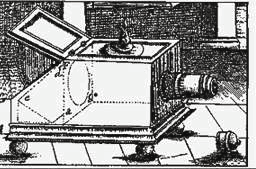

One of his reflex
cameras (left) showing the interior with 45 degree mirror, raised flap at rear,
and an extended lens with the cap off. This lens was really the same as used
today. It could provide a clear focus because it was housed within a
cylindrical tube and was then brought forward or back. Notice again, the wheels
for ease of movement.
1685
JOHANNES ZAHN ( - )
2
This year, Zahn published in
The page to the above right (from Zahn's 'Oculus Artificialis
Teledioptricus Sive Telescopium' of 1685) shows a drawing by Johannes Zahn
in the bottom frame, of a portable camera obscura
with side flaps in order to shield unwanted light from the viewer's vision. It
was considered portable not only because of it's size
but also it's ability to be moved easily from room to room. Notice it's roller-wheels. Zahn was a
visionary in many ways. He suggested the camera could be used underwater,
projected on glass for multiple use and, as a clock.








